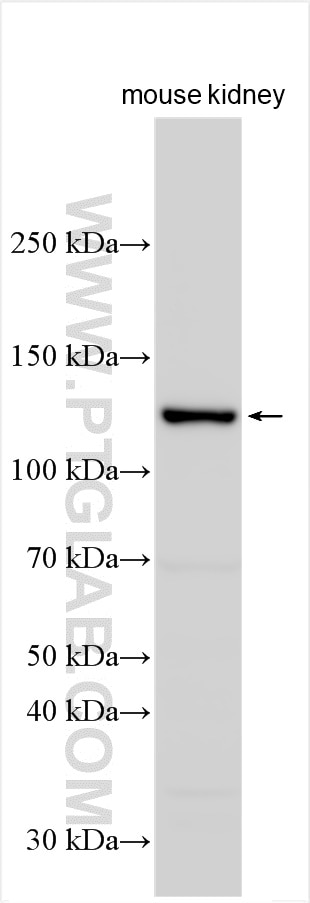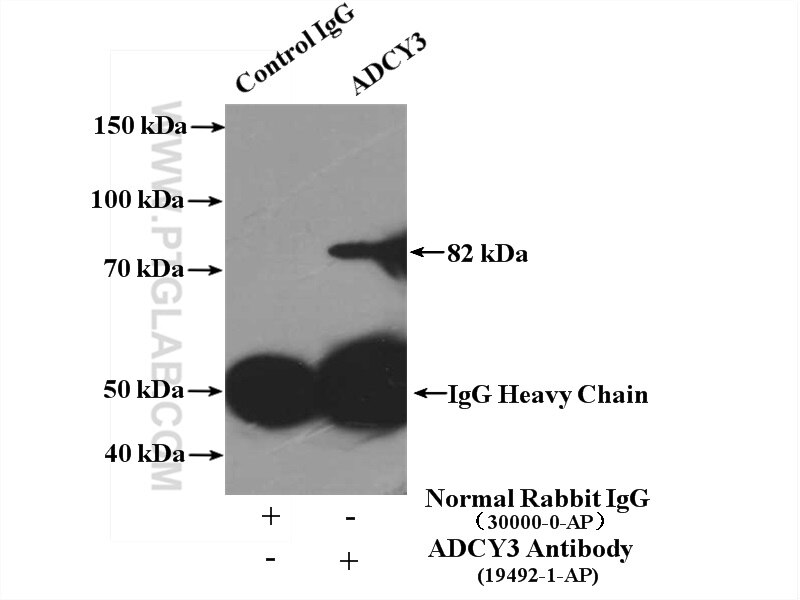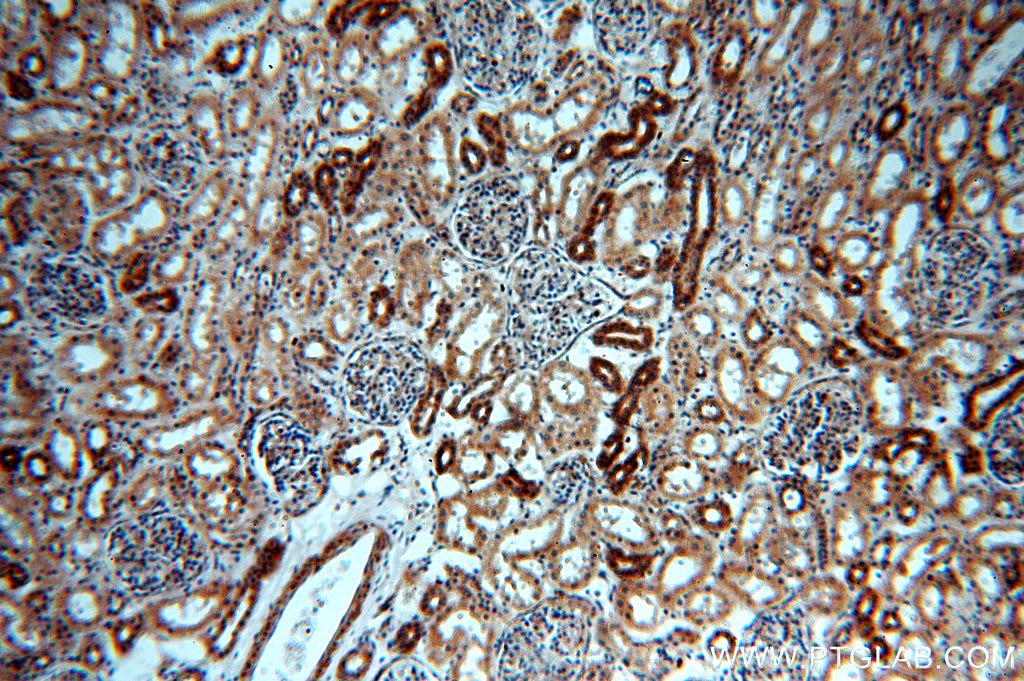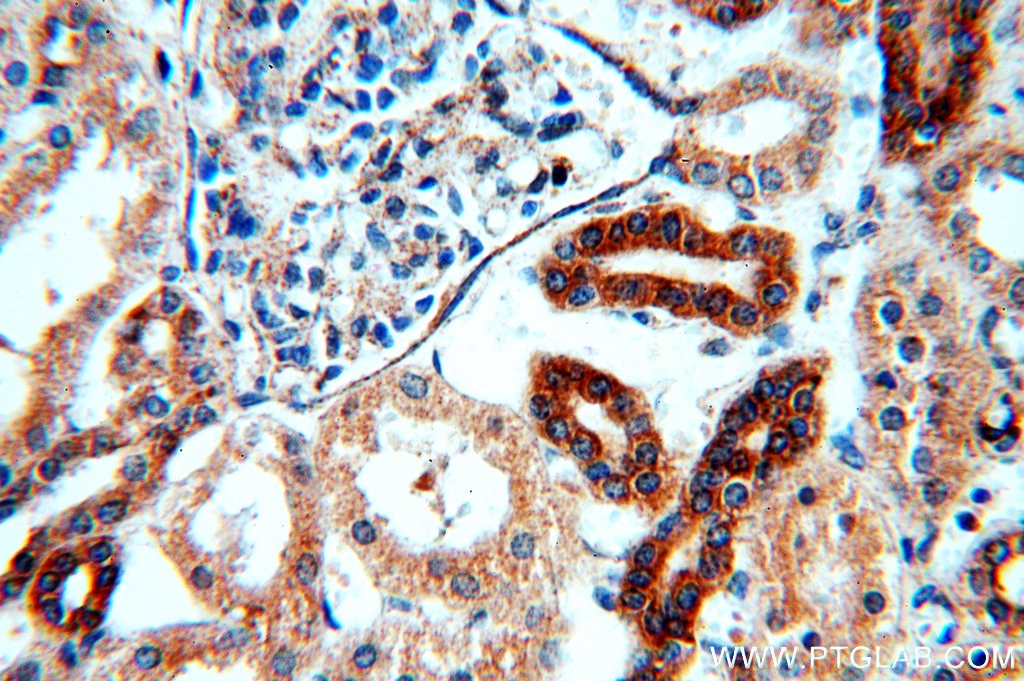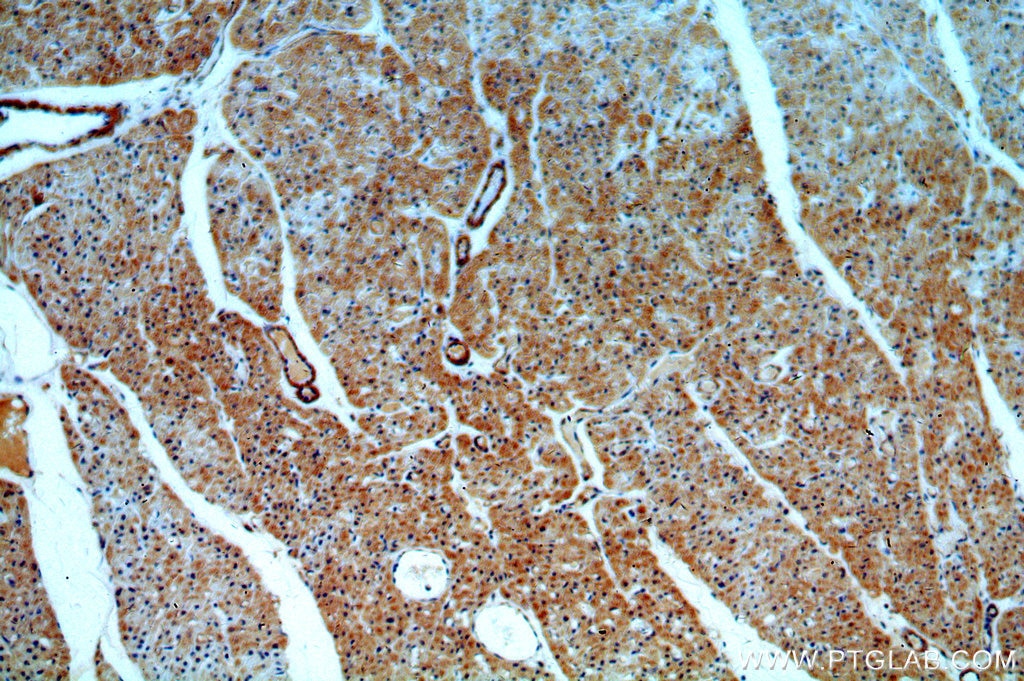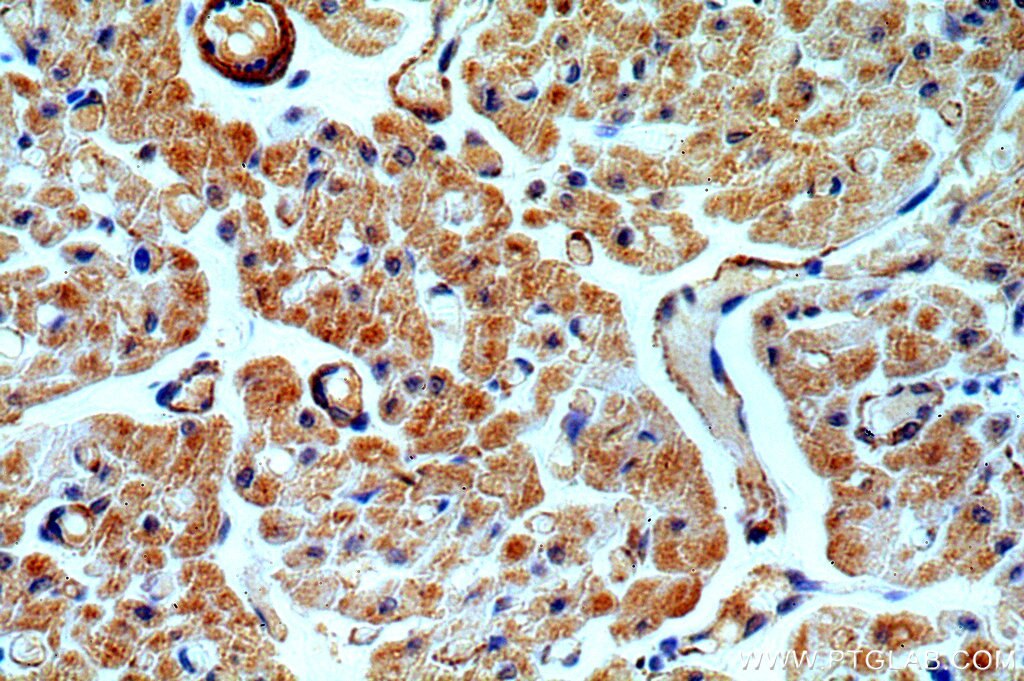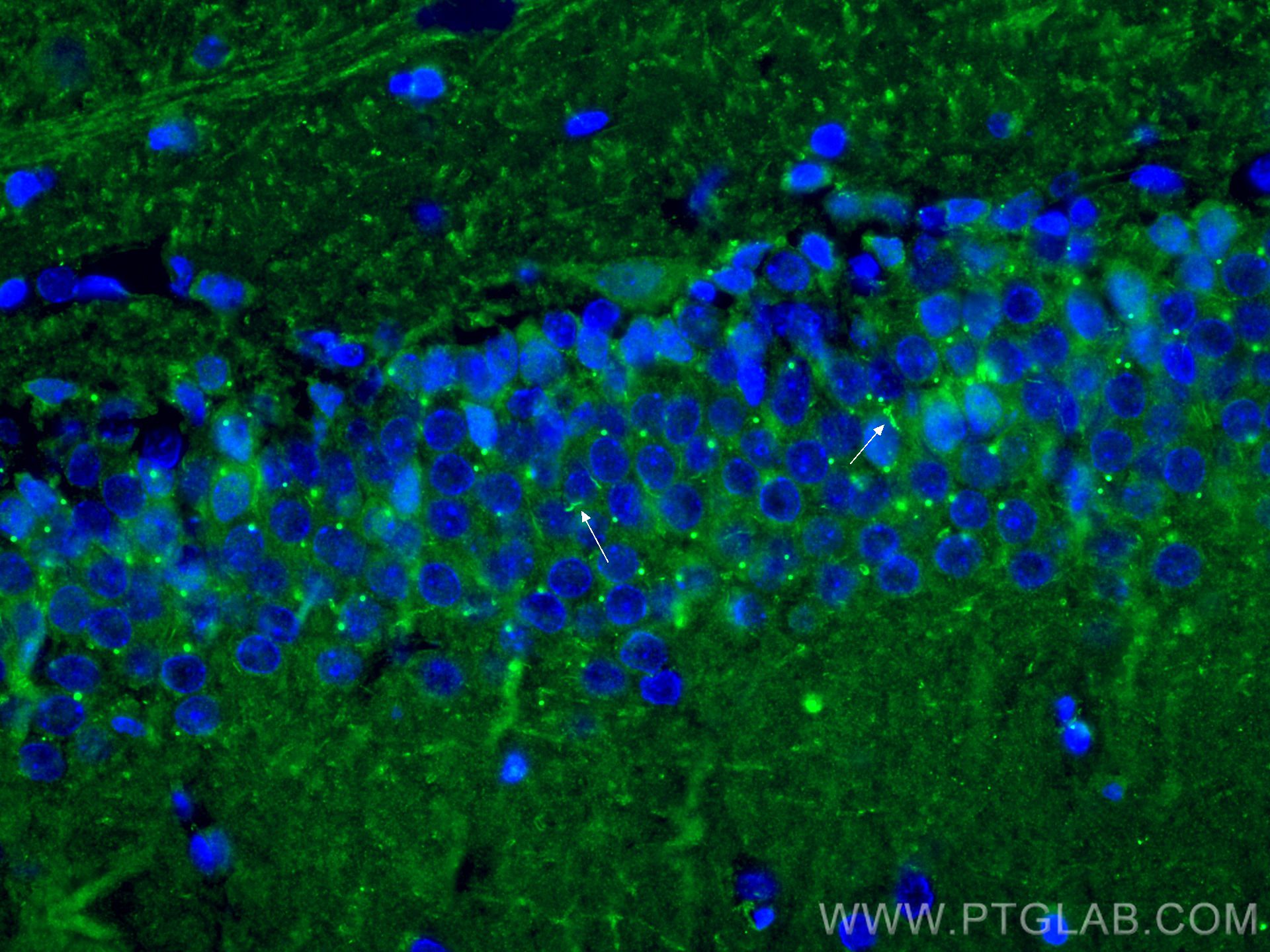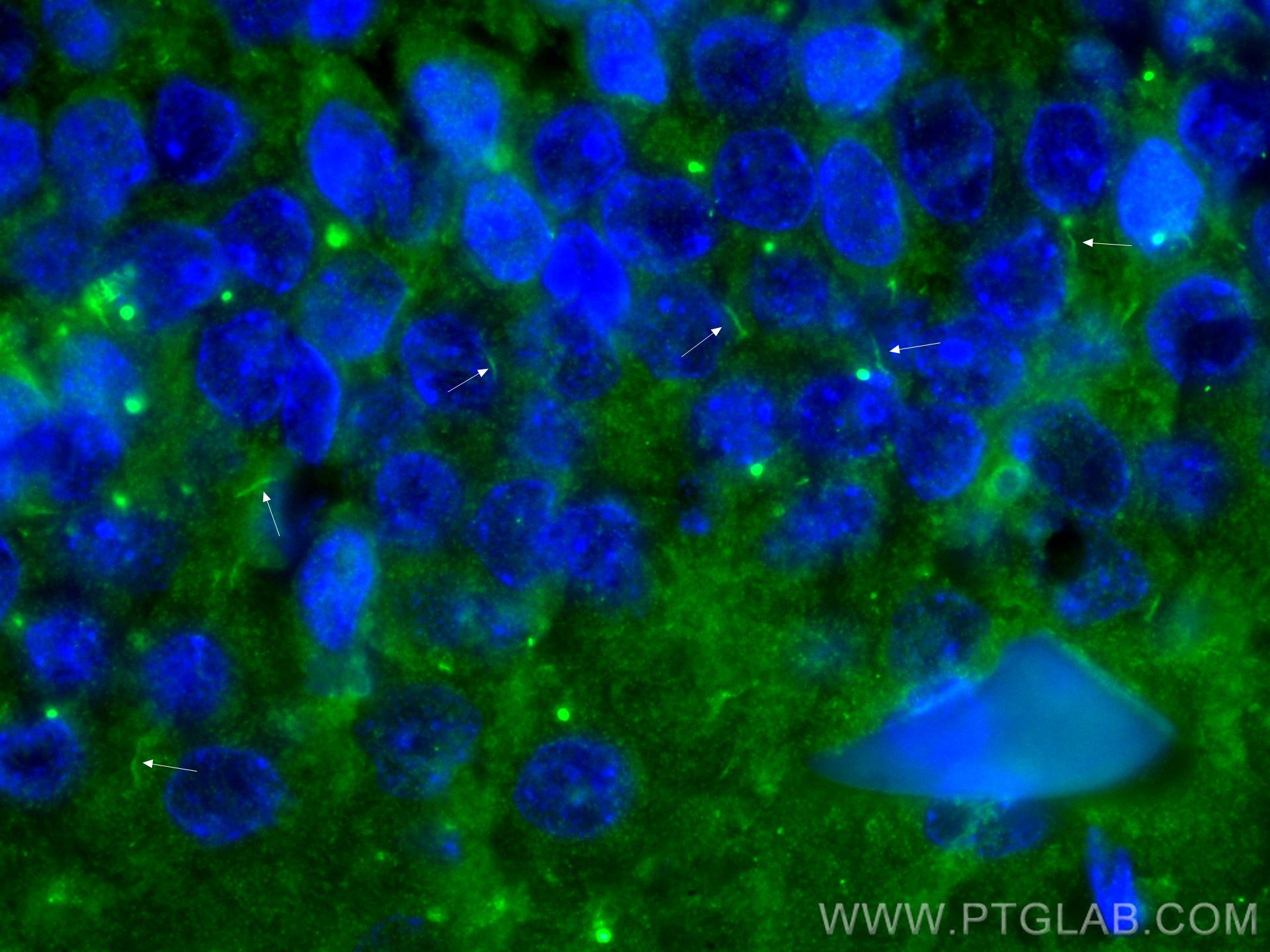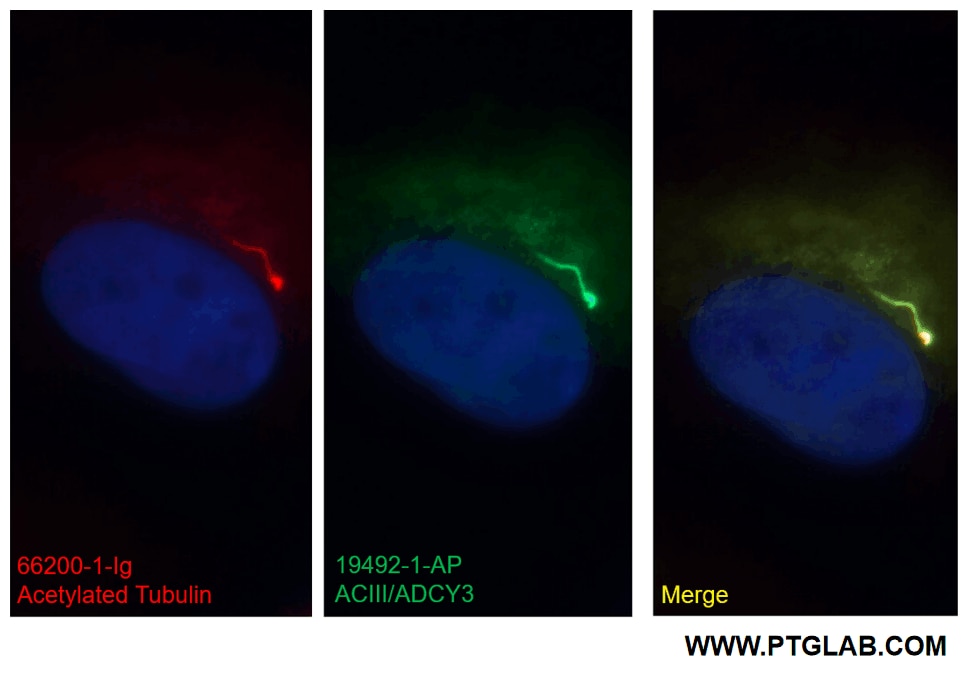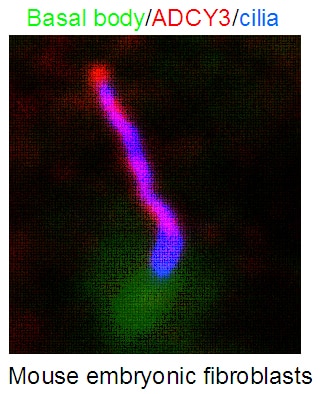ADCY3 Polyklonaler Antikörper
ADCY3 Polyklonal Antikörper für WB, IHC, IF/ICC, IF-P, IP, ELISA
Wirt / Isotyp
Kaninchen / IgG
Getestete Reaktivität
human, Hund, Maus, Ratte
Anwendung
WB, IHC, IF/ICC, IF-P, IP, ELISA
Konjugation
Unkonjugiert
Kat-Nr. : 19492-1-AP
Synonyme
Geprüfte Anwendungen
| Erfolgreiche Detektion in WB | Mausnierengewebe |
| Erfolgreiche IP | MDCK-Zellen |
| Erfolgreiche Detektion in IHC | humanes Nierengewebe, humanes Herzgewebe Hinweis: Antigendemaskierung mit TE-Puffer pH 9,0 empfohlen. (*) Wahlweise kann die Antigendemaskierung auch mit Citratpuffer pH 6,0 erfolgen. |
| Erfolgreiche Detektion in IF-P | Rattenhirngewebe |
| Erfolgreiche Detektion in IF/ICC | hTERT-RPE1-Zellen, MDCK-Zellen |
Empfohlene Verdünnung
| Anwendung | Verdünnung |
|---|---|
| Western Blot (WB) | WB : 1:5000-1:50000 |
| Immunpräzipitation (IP) | IP : 0.5-4.0 ug for 1.0-3.0 mg of total protein lysate |
| Immunhistochemie (IHC) | IHC : 1:20-1:200 |
| Immunfluoreszenz (IF)-P | IF-P : 1:50-1:500 |
| Immunfluoreszenz (IF)/ICC | IF/ICC : 1:200-1:800 |
| It is recommended that this reagent should be titrated in each testing system to obtain optimal results. | |
| Sample-dependent, check data in validation data gallery | |
Veröffentlichte Anwendungen
| WB | See 8 publications below |
| IHC | See 2 publications below |
| IF | See 9 publications below |
Produktinformation
19492-1-AP bindet in WB, IHC, IF/ICC, IF-P, IP, ELISA ADCY3 und zeigt Reaktivität mit human, Hund, Maus, Ratten
| Getestete Reaktivität | human, Hund, Maus, Ratte |
| In Publikationen genannte Reaktivität | human, Maus, Ratte |
| Wirt / Isotyp | Kaninchen / IgG |
| Klonalität | Polyklonal |
| Typ | Antikörper |
| Immunogen | Peptid |
| Vollständiger Name | adenylate cyclase 3 |
| Berechnetes Molekulargewicht | 129 kDa |
| Beobachtetes Molekulargewicht | 130 kDa,82 kDa |
| GenBank-Zugangsnummer | NM_004036 |
| Gene symbol | ADCY3 |
| Gene ID (NCBI) | 109 |
| Konjugation | Unkonjugiert |
| Form | Liquid |
| Reinigungsmethode | Antigen-Affinitätsreinigung |
| Lagerungspuffer | PBS with 0.02% sodium azide and 50% glycerol |
| Lagerungsbedingungen | Bei -20°C lagern. Nach dem Versand ein Jahr lang stabil Aliquotieren ist bei -20oC Lagerung nicht notwendig. 20ul Größen enthalten 0,1% BSA. |
Hintergrundinformationen
ADCY3 is an adenylate cyclase (AC) functioning to convert ATP to cAMP in response to signals initiated by activation of Gs-coupled receptors. To date, 10 isoforms of AC have been cloned in mammals. Initially identified in olfactory cilia, ADCY3 is regarded as the olfactory isoform and required for detection of odorants. Recently it has been found that outside of the olfactory epithelium the olfactory-like signaling pathway including AC3 may also have a key role in spermatogenesis and spermatozoa functions. In addition, the ciliary location of AC3 makes it as a prominent marker for primary cilia in brain.AC3 is typically found at 130 kDa in olfactory tissues.In nonolfactory tissues (such as sperm), this protein is reported to migrate with a molecular mass of 55 kDa,occasionally accompanied by additional bands at either 90 or 130 kDa(PMID:9539154).
Protokolle
| PRODUKTSPEZIFISCHE PROTOKOLLE | |
|---|---|
| WB protocol for ADCY3 antibody 19492-1-AP | Protokoll herunterladen |
| IHC protocol for ADCY3 antibody 19492-1-AP | Protokoll herunterladenl |
| IF protocol for ADCY3 antibody 19492-1-AP | Protokoll herunterladen |
| IP protocol for ADCY3 antibody 19492-1-AP | Protokoll herunterladen |
| STANDARD-PROTOKOLLE | |
|---|---|
| Klicken Sie hier, um unsere Standardprotokolle anzuzeigen |
Publikationen
| Species | Application | Title |
|---|---|---|
J Cell Biol Sonic Hedgehog activates prostaglandin signaling to stabilize primary cilium length | ||
Acta Physiol (Oxf) Aromatherapy: Activating Olfactory Calcium-sensing Receptors Impairs Renal Hemodynamics via Sympathetic Nerve-mediated Vasoconstriction. | ||
Hum Mol Genet Shortened primary cilium length and dysregulated Sonic hedgehog signaling in Niemann-Pick C1 disease. | ||
Biomolecules Preferential Expression of Ca2+-Stimulable Adenylyl Cyclase III in the Supraventricular Area, including Arrhythmogenic Pulmonary Vein of the Rat Heart. | ||
Front Physiol Expression Regulation of Water Reabsorption Genes and Transcription Factors in the Kidneys of Lepus yarkandensis. | ||
Dev Dyn Phosphosite T674A mutation in kinesin family member 3A fails to reproduce tissue and ciliary defects characteristic of CILK1 loss of function. |
